In the academic year of 1918-1919, New Hampton School, then known as the New Hampton Literary Institute, experienced several critical moments in step with the rest of society. Under the leadership of a new principal, Harold A. Smith, the year began much as it had for the few years prior. Classes engaged, new teachers welcomed, new courses introduced, and stories from alumni in the frontlines in Europe arrived frequently. The school also made it a point to reinstitute the school’s football team, which hadn’t fielded a team in three years. The school had begun plans for its Centennial celebration in 1921, hoping for many alumni to return, and campaigned for a landmark $150,000 endowment.
To set our modern selves in this timeframe, reading the voices of our school through the Hamptonia offers a few lessons in hope, joy, persistence, and the idea of doing what needs to be done. This year of 1918-1919 and the next few that followed experienced many highs and lows. The highs were grand, and the lows were overcome through care and hard work.
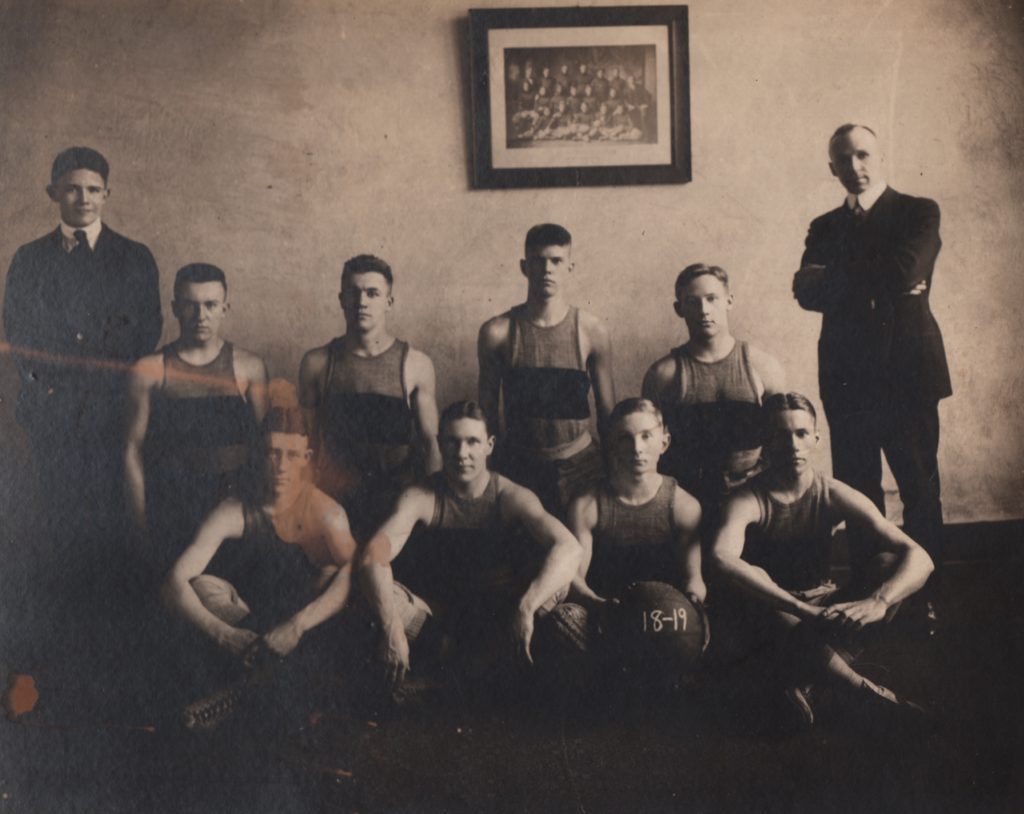
World War I (1914-1918)
This war, the Great War, started years prior. The school was still co-educational, and students thrived in an environment where they were called to focus on their studies and to serve their country through volunteer opportunities. In the spring of 1918, several months out from the end of the conflict, the students shared these words in the Hamptonia. The first wave of Spanish influenza was beginning to spread, particularly in the war zones of Europe. This illness was an avian-borne influenza strain of unknown origin that gained its name due to the strong persistence of the Spanish media in reporting on the disease, while some other countries reportedly suppressed coverage due to the war.. It was reportedly less deadly than the yet-to-be second wave. Here at New Hampton, the school and much of the United States were largely unaffected by the first wave, and instead continued their thoughts on the war.
“Because we are at war, student life has not decreased in importance, but on the other hand, the school is more essential than in times of peace. The tendency is to forget studies in our patriotic duties. But to study in preparation for life is as patriotic as to knit for the Red Cross, or to give to the YMCA. We must not minimize the great duties, neither must we forget our studies.
“There are several reasons why school work must not be neglected. In the first place, we must be trained to do efficiently the work of the thousands of boys that will be lost in the great conflict. This is the more important because after the war there will come a reconstruction period, and it will be our duty as men and women to settle many difficult questions in a way to avoid needless suffering.
“We must make in the next few decades the most progress that has ever been made. It will require the united efforts of all the boys and girls to counteract the demoralizing influence of such a war as is now going on.” — Hamptonia Vol. 38, Issue 3: April 1918
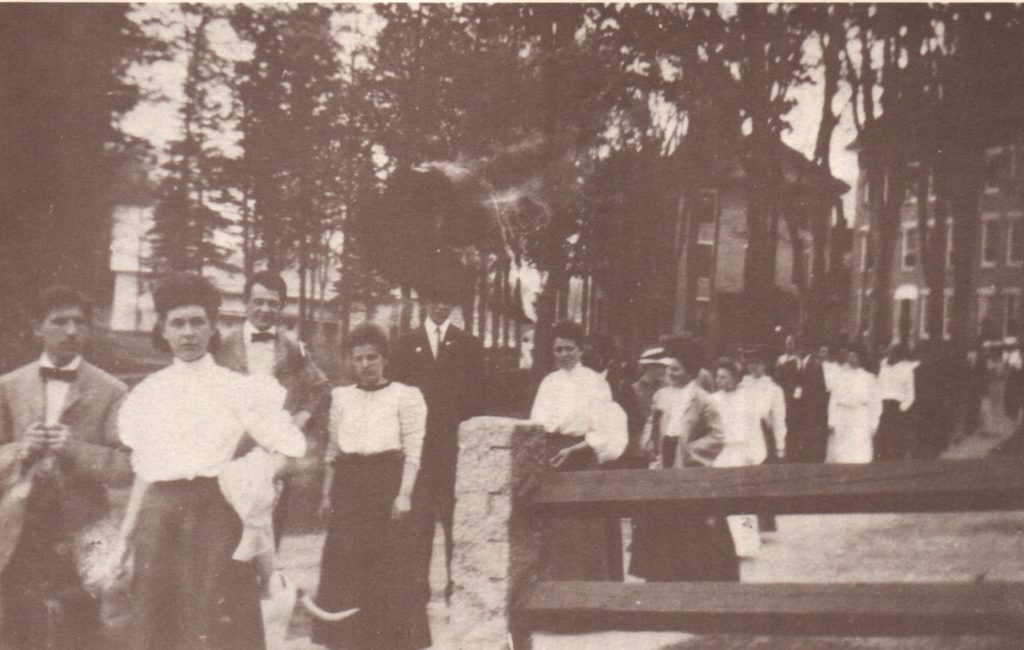
Peace and the start of the Second Wave
With the beginning of the fall term, life began to change quickly for the students, teachers, and the greater community of New Hampton. Under the guidance of a new principal, the students rapidly warmed up to his leadership. They report that they enjoyed the fall formal during the sixth week of classes as usual, despite news of the rapidly spreading influenza. While we can’t make assumptions on their thoughts at the time, we do know now that the first wave was relatively mild, and became more deadly after a mutation of the same avian-influenza strain.
On October 2, the school hosted a reception for New Hampton alumni who had served for ‘our great country’ and returned from the war. Amid this spirit of celebration, on their accounts “a very pleasant evening being enjoyed by all.” Within a week, on October 9, the school closed because of the second wave of Spanish influenza, soon to open again on October 21. “It is not known that any of the students had the pleasure of the disease.”
Due to the closing, the school missed its annual School Walk, a tradition we now refer to as Foliage Day but has also been known as Mountain Day and other names. With classes resuming, the work started to make up for the lost class time. However, November arrived with tremendous and diverting news.
“On Monday, November 11, N.H.L.I. celebrated the surrender of Germany. Bells pealed forth, whistles blew and fireworks went off around and in the buildings during the day. There was no school in the afternoon, while in the evening a celebration, consisting of a bonfire, burning of the Kaiser, and the shooting of guns and fireworks was held. That the spirit has not yet departed is proven by the occasional disturbance which arises as the result of a stray cannon cracker.” – Hamptonia, Volume 39, Issue 1: November 1918.
The war had ended. From our Hamptonia issues, we also learn from the reflections of many New Hampton soldiers through their letters submitted back to their alma mater. Days that were good, days that were bad, and small joys they found along the way—from viewing a herd of quiet Swiss cattle to finding a moment of peace and fresh air on top of a mountain. Additionally, an editorial proclaiming “Henry Ford as the World’s Benefactor” highlights an America enjoying technological advances such as the automobile. As fall wound down, the school was busy preparing for the holidays and its annual Reunion, hosted each January in Concord, New Hampshire.
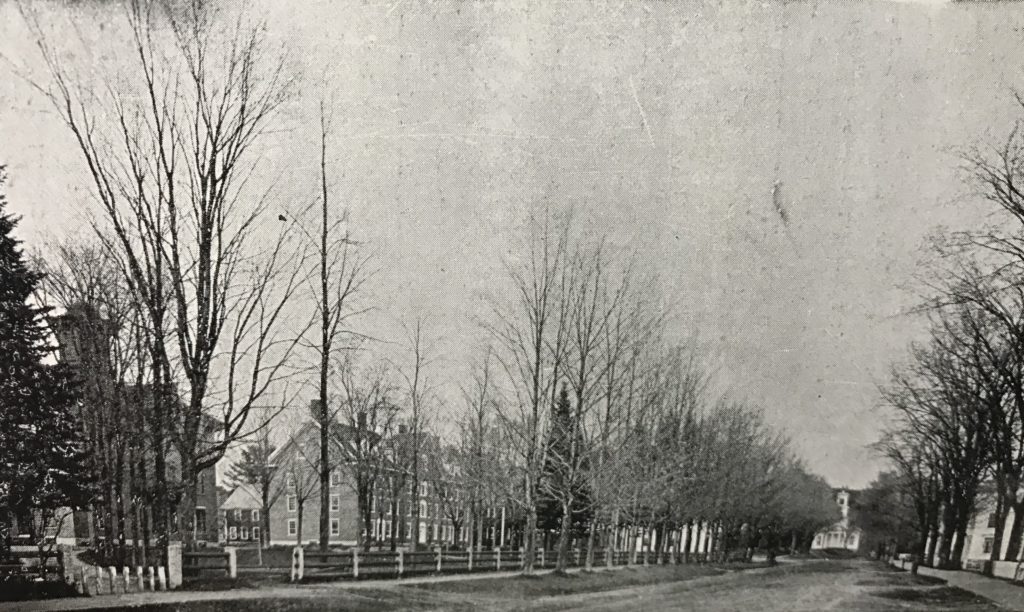
Spanish Influenza, the Second Wave continues
From the March 1919 Hamptonia, the first heading on the first page is: Influenza. The second wave surged in New Hampshire in December, sickening 25 students at the time of this second closing of the year.
“Our school, like many others, has suffered much from the influenza epidemic. Still, we consider ourselves very fortunate that all of our members were able to return. Three weeks were lost when the episode was raging in October, although no members of the school had it at that time. The second week of December the epidemic started among the students, and before December 14, when the school closed, there were nearly twenty-five cases. When school reopened on January 6, nearly everyone—teachers included—had had at least a touch of the flu. The arrangement has been made to make up two weeks’ work by keeping ten Saturday mornings, and the rest by shortened vacations and lengthened lessons. It requires much labor on the part of both teachers and pupils to make this year a success, but with cooperation it can and shall be done.” – Hamptonia Vol 39, Issue 2: March 1919
The school remarks upon how they were “very glad to say that none of the cases proved fatal” but that nearly all of the students and teachers experienced the flu. While they moved forward with their plans for Reunion in January 1919, they report it was poorly attended due to continuing influenza around the country, the loss of many alumni due to influenza and the war, and, for some, the fear of attending due to the school’s only recent reopening following their own recovery from the flu.
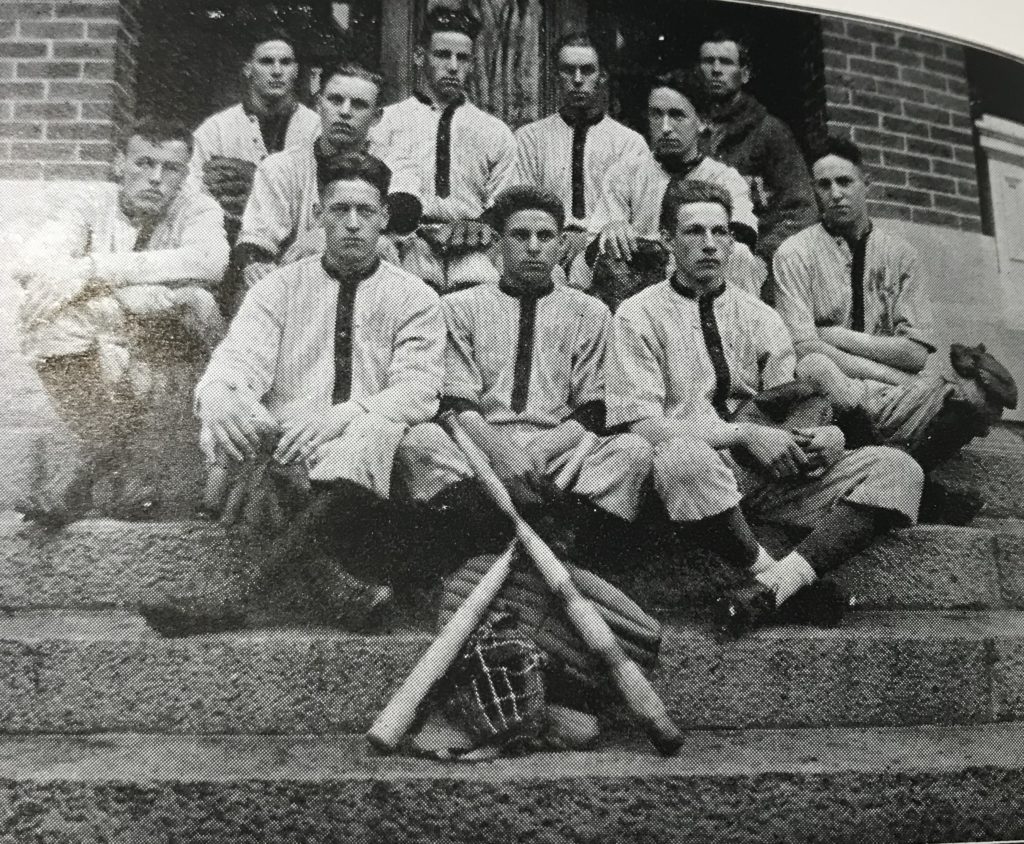
Meet the world half way
As influenza moved on, the attentions of the school returned to finding normalcy, but the community had to work hard to make up for the many weeks of classes lost. One article implored the community to “meet the world half way.” In discussing opportunities, kindness, sociability, and other vital areas, the writer shares, “to meet the world halfway is to use the opportunities that life presents. No man is born into the world whose work is not born with him. He needs only to improve the opportunities which come to him.” They sought for students to recognize opportunities for kindness and service, to learn lessons from life and school, and remember to be active and useful to those who need you to grow your character.
They also commonly refer to the influenza closings as vacations, or “forced vacations.” The spring term brought the joy of a missed formal, the return of the School Walk in May, and a successful baseball season. They celebrated the end of the school year, reflecting on all the changes behind them.
“Commencement is rapidly approaching and the school year is drawing to its close. It has been an extraordinary year for several reasons, first: the school has been twice closed because of the influenza and six weeks have been lost; again the beginning of the year found us with almost entirely a new staff of teachers and with a new principal and new courses installed.
In spite of the enforced vacation, we have done a creditable year’s work.
By shortening the vacations and utilizing our Saturday forenoons we have made up the six week’s work lost, and feel that the cooperation of teacher and student has brought about this result.
Nor has the whole year been spent in study. The three plays given by the Germanae, Fraternity and Adelphi were adjudged the best in several years. Much credit is due Professor Smith for his work in training the boys and girls for those plays.
Last fall, for the first time in three years, New Hampton had a football team, and although owning to the different landscape experienced, no game was won by our team, we have paved the way for a bigger and better team next year.
All in all, New Hampton has made a very creditable record in a most trying year, and we may look forward to next year with the greatest hope for the further success of our grand old school.” – Hamptonia Vol. 39, Issue 3: May 1919
We know from history that Spanish influenza transmission died out largely by the summer of 1919 in the US, though it continued globally for a couple of years. By the next fall, the editors of Hamptonia report that a new fever has taken ahold of the school—”Auto Fever”—as teachers and Principal Smith took to purchasing Oldsmobiles and Fords.
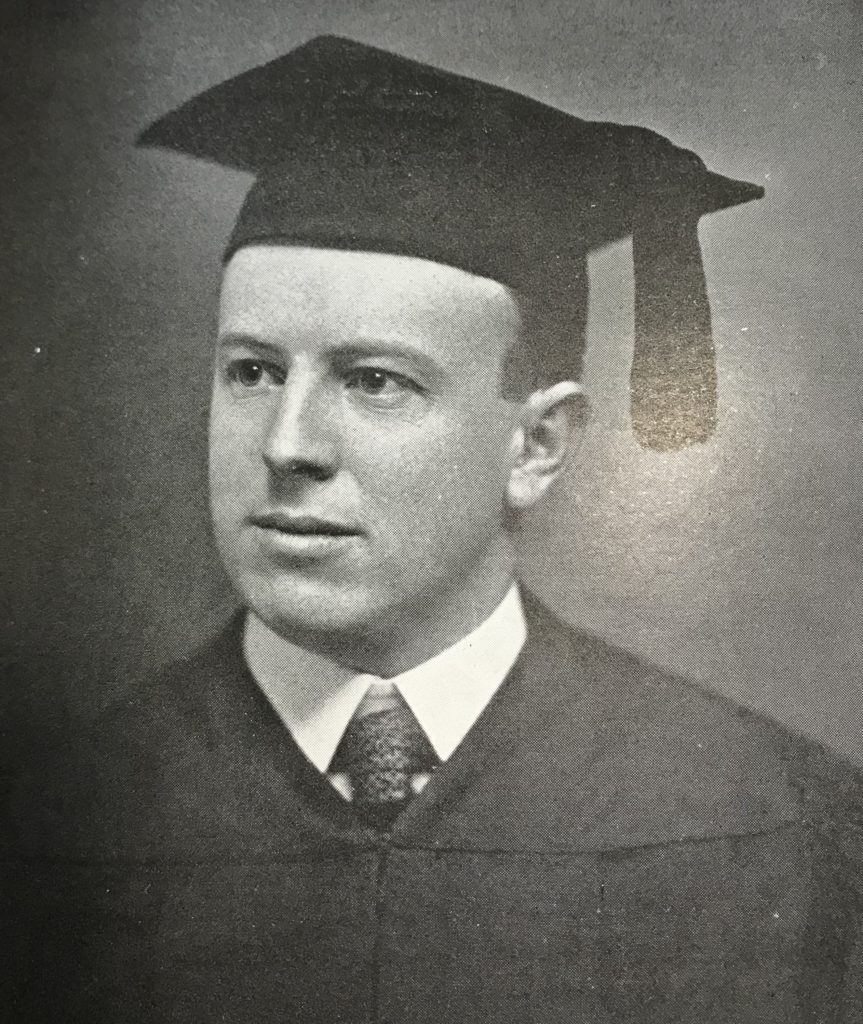
Looking ahead to our Bicentennial
This fall, our ‘grand old school’ of New Hampton plans to kick off our Bicentennial celebrations at Homecoming Weekend 2020, continuing those celebrations through Founder’s Day in 2021. While we do not yet know the outcome of our current coronavirus pandemic, COVID-19, and the potential for a second wave, we continue to move forward with our plans with hope, excitement, and careful planning. We also feel gratitude for the technologies available to us, which allows continued instruction of our classes during the school’s campus closure. Following the guidance of our leaders, both local and national, and health organizations worldwide, we remain hopeful for finding our new normal and the opportunity to enter our third-century as strong as ever.
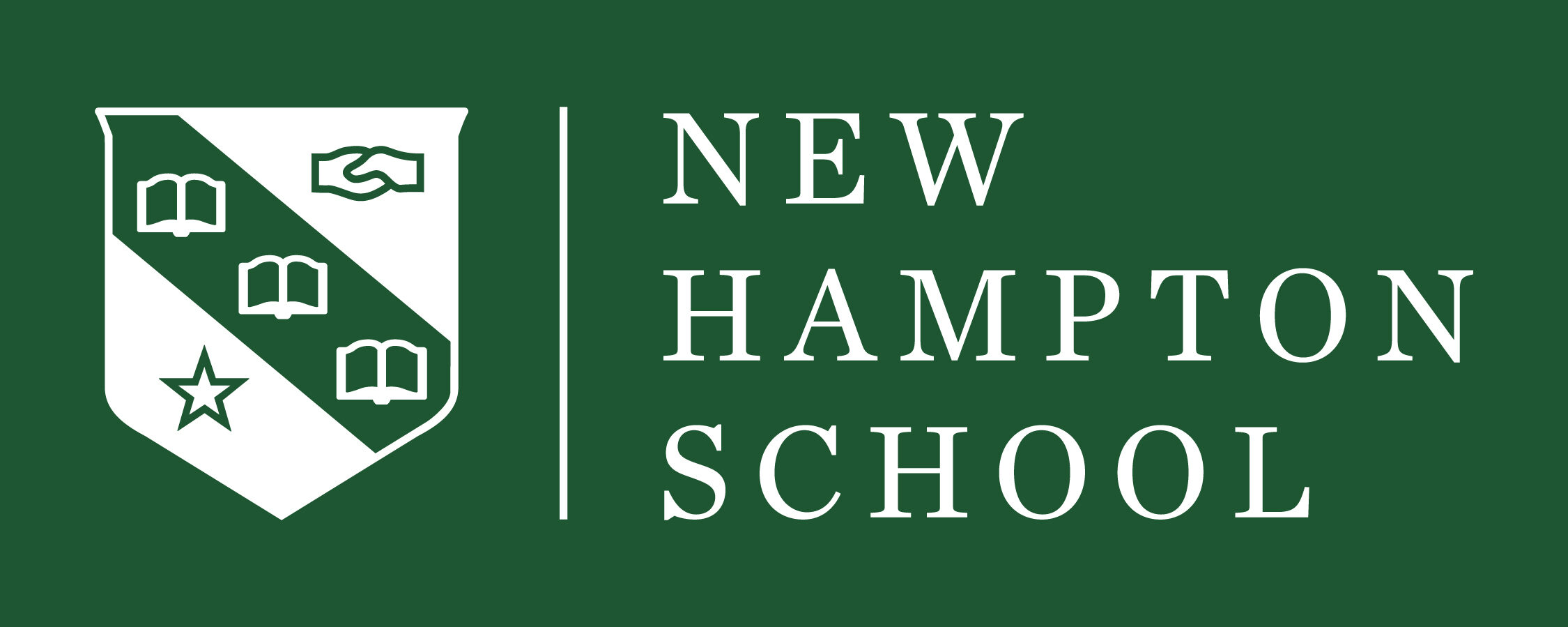

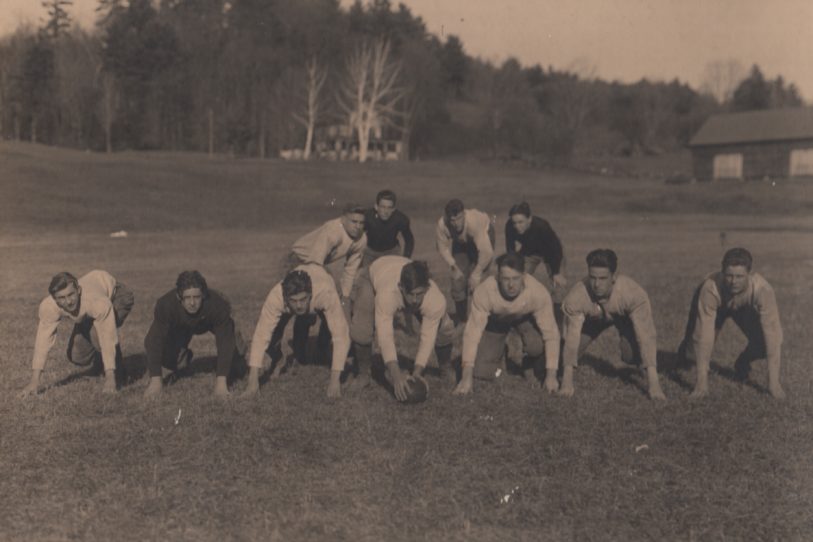


Dear NHS, It was SO interesting to read the History of NHS during another challenging pandemic time as well as a World War. The pictures are wonderful as well! Resiliency and Perseverance are obvious dynamics within the NHS Community. I look forward to being on Campus for Re-union next year! Always in my Heart, Julia Sauve, MA (Dance Teacher Alum)
A very interesting account. Unfortunately, it perpetuates the myth that the 1918 Influenza came from Europe and specifically from Spain -- hence the label "Spanish Flu". In reality, the origin of such airborne respiratory viruses is unknown. According to the Encyclopedia Britannica, it was first identified in Kansas, from where it was spread largely by American soldiers going to Europe. Eventually it spread to the rest of the world until 1921, when it died out. At the time, leaders had very little understanding of viruses and even less of how to manage epidemics. Today, however, much more is known about how viruses spread from animals to humans and from one person to large groups of people. Our current pandemic is becoming more destructive by the day because of the failure of too many of our leaders to heed the guidance of epidemiologists here and around the world. Unfortunately, it is likely to take several years to arrive at a more stable condition where Covid-19 will be treatable and where there will be some degree of immunity. Don't count on that happening by 2021.